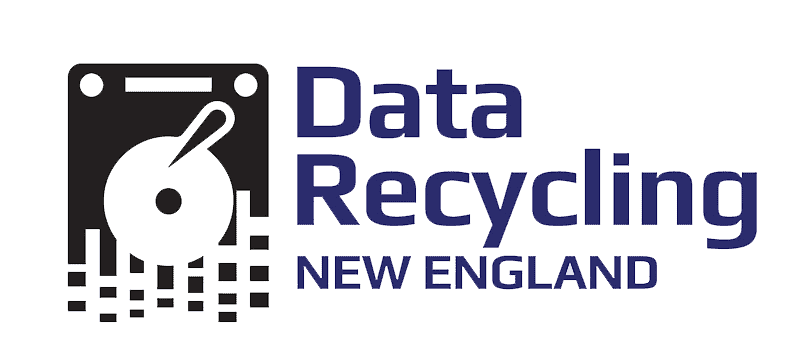To keep pace with your industry’s innovations as well as constant upgrades digital world, technology upgrades are inevitable. Managing the outdated computers and electronics is also inevitable, and often, a challenge. Disposing of old computers and IT equipment is not as simple as tossing them in the trash. Improper disposal not only harms the environment but can also expose businesses to data breaches and compliance violations. Taking the necessary steps to ensure secure data destruction and eco-friendly e-waste recycling is as smart as it is critical. It is also less costly in the long run than you might initially think.
As an experienced data destruction and e-waste recycling company, here’s our guide on how businesses should prepare. It is also a tip sheet on how to save time and money in the process.
1. Inventory and Categorize IT Assets
Before initiating any disposal or recycling, the first step is to take stock of all the IT assets the company plans to retire. This includes not only computers but also other devices such as servers, hard drives, smartphones, tablets, and networking equipment. By creating a detailed inventory, businesses can ensure that no device containing sensitive information is overlooked. At the same time, it is also an important step for your internal accounting and for documentation to us for recycling.
Action Steps:
- IT should remove devices from any Cloud Management such as iTunes, Android, Windows, as well as 3rd Party Management. Sometimes this can conflict with destroying information with devices that have onboard data.
- If the device is not removed from management and the device is reused or resold even if it is erased and reset the device will still show its under management once it is connected to the internet and the organization it is connected to.
- In addition to cloud management other barriers should be removed such as Admin, Bios, and Firmware passwords. This makes it so devices can be resold for reuse and also removed company data that maybe listed on the bios.
2. Ensure Secure Data Destruction
We focus on data security, and urge our clients to do the same. Even a single overlooked hard drive can lead to data breaches, regulatory penalties, and loss of customer trust. Note that companies should not rely on simple deletion or reformatting of hard drives; this does not completely erase data. A certificate of data destruction ensures that your data is irretrievable and that your business remains compliant with data protection regulations such as GDPR, HIPAA, and others.
Our Action Steps:
- Data Wiping: Use certified data-wiping software to overwrite data on hard drives multiple times, ensuring complete erasure. With this process, we certify safe, electronic data destruction.
- Hard Drive Shredding: For businesses dealing with extremely sensitive data, hard drive shredding offers an additional layer of protection by physically destroying the storage device. Whether hard drives are shredded at a facility or at the client’s location on-site, accurate accounting of the devices and serial numbers is critical for both the company and the recycler.
- Certificates of Destruction: Always request certificates of destruction from your IT recycling or data destruction provider. This documentation serves as proof of compliance and provides a chain of custody for your records.
3. Partner with the Right E-Waste Recyclers
Make sure your e-waste recyclers adhere to environmentally responsible practices, ensuring that electronic waste is handled safely, ethically, and in accordance with local and international environmental regulations. Your old IT assets should either be refurbished for reuse or responsibly broken down and recycled to minimize landfill impact.
Action Steps:
- Ask about the specific processes they use for sorting, recycling, and disposal.
- Inquire whether they offer a zero-landfill policy, which guarantees that no part of your e-waste ends up in landfills.
4. Understand Compliance Requirements
Different industries are subject to various regulations regarding data handling and disposal. Companies in sectors such as healthcare, finance, and legal services may need to adhere to stringent data protection laws that mandate secure destruction of electronic information. Failure to comply with these regulations can result in hefty fines, legal repercussions, and reputational damage.
Your Action Steps:
- Review industry-specific compliance standards such as GDPR, HIPAA, PCI-DSS, and SOX.
- Ensure your IT disposal plan aligns with these regulations, particularly around data destruction.
- Work with your legal or compliance team to document your disposal processes.
5. Develop an IT Disposal Policy
Every company should have a documented IT disposal policy that outlines the steps for secure data destruction and e-waste recycling. A well-defined policy ensures that all employees follow the correct procedures when handling retired equipment, reducing the risk of accidental data exposure or improper disposal.
Action Steps:
- Create a policy that covers asset tracking, data destruction procedures, and e-waste recycling.
- Train employees on proper handling of end-of-life equipment.
- Review and update the policy regularly to accommodate new technologies and regulations.
Always Looking Forward …
If your company’s old IT assets are still functional but no longer needed, we consider refurbishing them for reuse to extend the life of computers and other electronics. This benefits both the environment and potentially provides value through resale or donation.
7. Plan for Future IT Disposal Cycles
We know that technology moves quickly, and the cycle of upgrading and retiring equipment will continue for the foreseeable future. We look forward to building a long-term relationship with you and to make it easier for your business to stay ahead of the curve.
We suggest that companies schedule regular audits of IT assets to identify upcoming disposal needs.
This streamlines your ability to establish a recycling and destruction plan that aligns with your company’s technology refresh cycles.
Beyond a technical requirement, the proper preparation of computer disposal and electronic waste recycling is a critical aspect of data security and environmental responsibility. In partnering with a trusted data destruction and e-waste recycling provider there is peace of mind, ensuring that both your data and the environment are protected. Taking the time to implement these steps will not only meet regulatory requirements but will also contribute to a sustainable and secure future. Data recycling NE, Inc. is here to help answer questions as well as manage your company’s recycling and data destruction challenges.

